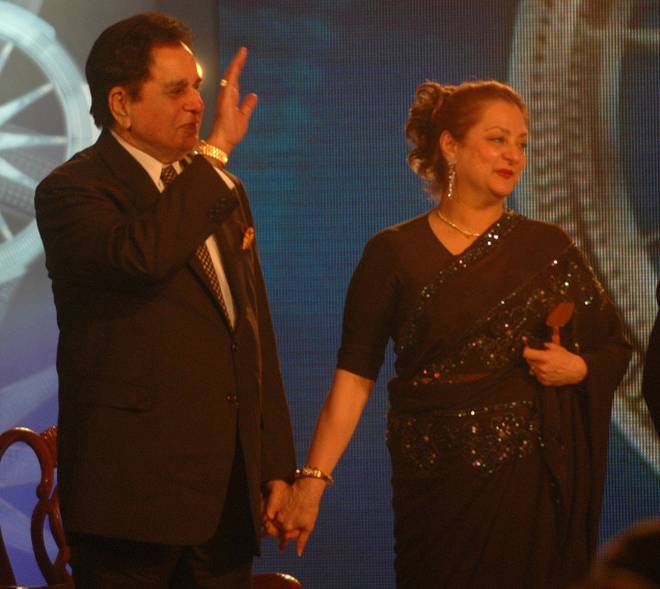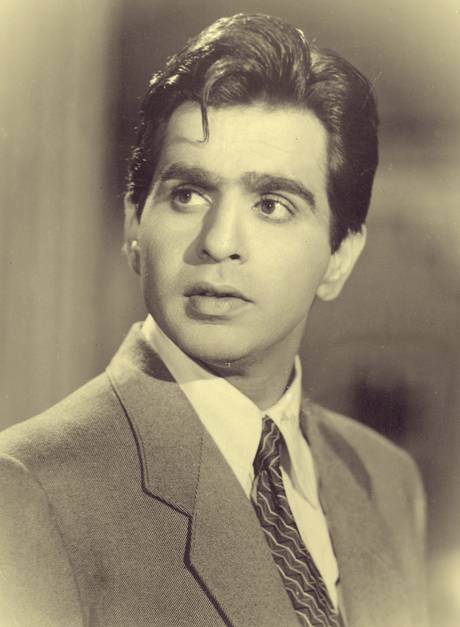 The Padma Vibhushan constantly lunged for complex characters where he was expected to evoke multiple emotions in a single frame.
The Padma Vibhushan constantly lunged for complex characters where he was expected to evoke multiple emotions in a single frame.
The Padma Vibhushan constantly lunged for complex characters where he was expected to evoke multiple emotions in a single frame.
When Marlon Brando was struggling to find a footing in Hollywood, a shy Pathan boy from Peshawar was practising method acting in Bombay film industry, helping it come out of the Parsi theatre’s influence. As Dilip Kumar transcends to a new stage, the pole star of the golden age of Hindi cinema would be remembered for setting a template of acting for generations to come.
A veritable cultural icon who inspired economist Meghnad Desai to draw parallels between his films and the newly independent India’s tryst with socialism and capitalism in his seminal work, Nehru’s Hero: Dilip Kumar in the Life of India, there is a bit of Dilip Kumar in everyone’s life.
Discovered and later rechristened by Devika Rani of the famed Bombay Talkies, Dilip Kumar, along with Raj Kapoor and DevAnand, were part of the discovery of cinema in India as a means of mass communication as we see it today. They had had few examples to follow and perhaps it worked to their advantage as each one carved out his own niche.
Out of the three, Dilip Kumar’s naturalistic style never became stale or dated. The right blend of star and actor who could keep both the public and the purist engaged with his craft, he kept his performances subtle, understated but always believable.
Not just his younger contemporaries like Rajendra Kumar, Manoj Kumar and Dharmendra, generations of dependable actors, from Amitabh Bachchan to Shah Rukh Khan and Aamir Khan to Irrfan Khan, built edifices of their performances on the foundation laid by Dilip Kumar. Bachchan who played his son in Shakti once said there was such finality to Dilip sahib’s performances that once he enacted a scene there was no alternative to it. Irrfan Khan once told this journalist that he often wondered when trained actors like him find it difficult to deal with scars left by tragic roles, how Dilip Kumar, who learned the craft on his own, came to terms with it. Well, he did approach doctors in London who advised him to take up lighter roles.
Film historians often label the thespian as the tragedy king for his moving portrayal of a loner who loses everything in love in a series of films such as Jugnu, Deedar and Devdas but the eight-time Filmfare Award winner was equally compelling as a winsome romantic in Shabnam, Azaad and Kohinoor. Not to forget his intense performances as a revolutionary in Shaheed and a trade union leader in Paigham.
Be it the lawyer who rapes a village girl in Mehboob Khan’s Amar, the journalist who becomes black-marketeer in Zia Sarhady’s Footpath, the atheist in love with a mendicant in Kidar Sharma’s Jogan or the wheel-chair bound Raja Sahib in Aadmi, a role earlier essayed by Shivaji Ganesan, the Padma Vibhushan constantly lunged for complex characters where he was expected to evoke multiple emotions in a single frame.
He experimented not just with characters but also directorial styles. Both Amar and Footpath deal with moral guilt but while Mehboob Khan visualised a mass entertainer, Zia’s treatment was neo-realist. With Tapan Sinha’s Sagina Mahto, he ventured into parallel cinema and earned praises from his contemporaries.
At the time of Mughal-e-Azam, he was the top draw, but the narrative demanded Kumar to play second fiddle to Prithviraj Kapoor, a senior and a friend of his father. He delivered a restrained performance, a subtle counterpoint to the bombastic Kapoor that is etched in the minds of cinegoers. The way he caresses the luminous face of Madhubala with a feather is perhaps the most elegant romantic sequence filmed without a dialogue.
The one that stands out and inspired many adaptations is the dacoit in Gunga Jumna, his ambitious home production where the sophisticated Kumar transformed into an Awadhi speaking rustic who is forced to pick up the gun.
He played serious roles with such dignity that he didn’t need to be loud to make people laugh. He brought his craft to comic roles as well. In Ram Aur Shyam, the scene that still leaves everyone in splits is the one where Shyam starts playing a poor copy of Ram.
It is this constant urge for variety and chiselling of the craft that the megastar, despite the world at his feet, chose to do only around 60 films spanning over almost five decades. He refused Guru Dutt’s Pyaasa for he found the character similar to Devdas. He said no to David Lean for Lawrence of Arabia as he was not keen to commit the amount of time that the director was asking from him.
In a BBC interview, he once said when the director comes to him with a 30-year-old character, he tries to find and build the first 29 years of his life from the script so that “I start identifying with the character. Often directors leave it to me to interpret the character.”
Known to help out his colleagues in finding a rhythm that suited the narrative, the actor is said to have ghost directed many films such as Gunga Jumna, Ram Aur Shyam and Aadmi.
He took the preparation for a character to a different level. For “Madhuban Mein Radhika Nache Re” from Kohinoor where he played sitar on screen, he trained with sitarist Ustad Halim Jaffar Khan for six months.
It is said while filming for Dil Diya Dard Liya, he ran four rounds of the studio because in the next sequence he was supposed to snatch a rifle from Pran, playing the villain, in a state of breathlessness.
Even in his second innings, when his mannerisms became marked, he impressed with power-packed performances in Shakti, Mashaal and Karma.
Off-screen, as a philanthropist, he always maintained that “industrialisation has made us narrow-minded”. He would always say “being developed and being civilised are two different things.”
In the late 60s, when an argument was made about films promoting alcoholism and that they could be used to promote population control, Dilip Kumar said he was for promoting good values through films but that didn’t mean films become “instructional” or a “vehicle for propaganda.”
In love with finer things of life, he had an abiding love for poetry and literature. Often, when he had to sidestep a controversial topic, he would come up with an Urdu couplet that would capture his emotion on the subject. Once when he was asked about his relationship with Madhubala, Kumar invoked Sahir Ludhianvi: “Mohabbat tark ki main, Garebaan see liya main, Zamane Ab Toh Khush ho, Zehar Ye Bhi Pi Liya Maine.”
Deeply entrenched in Indian ethos, he never got over his childhood connection with his home town Peshawar where the young Yusuf Khan would be found dribbling the football or listening to stories at Qissa Khawani Bazaar. He remained a symbol of the undivided India as the Pakistan government bestowed upon him its highest civilian honour, the Nishan-e-Imtiaz. He wrote to the then Prime Minister Atal Bihari Vajpayee that if he considered it prudent, he would surrender the award. However, many feel it made his wait for the coveted Bharat Ratna, longer.
Post Disclaimer
Disclaimer: Dilip Kumar, the pole star of the golden age of Hindi cinema, no more - Views expressed by writers in this section are their own and do not necessarily reflect Latheefarook.com point-of-view
 Born as Muhammad Yusuf Khan on 11 December 1922, yesteryear actor Dilip Kumar’s career spanned six decades. The name Dilip Kumar was given by Hindi author Bhagwati Charan Varma.
Born as Muhammad Yusuf Khan on 11 December 1922, yesteryear actor Dilip Kumar’s career spanned six decades. The name Dilip Kumar was given by Hindi author Bhagwati Charan Varma.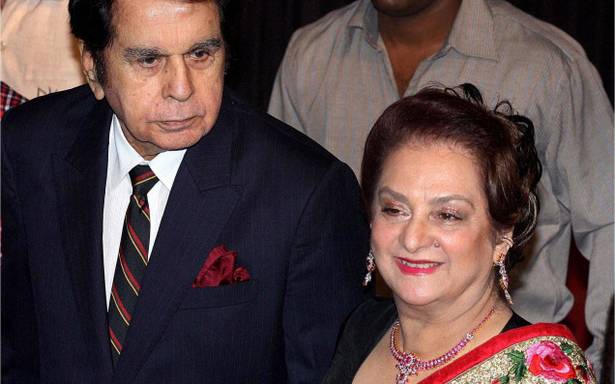 He married Saira Banu in 1966. Saira and Dilip Kumar were seen together in the movies Gopi (1970) and Jwar Bhata (1944).
He married Saira Banu in 1966. Saira and Dilip Kumar were seen together in the movies Gopi (1970) and Jwar Bhata (1944).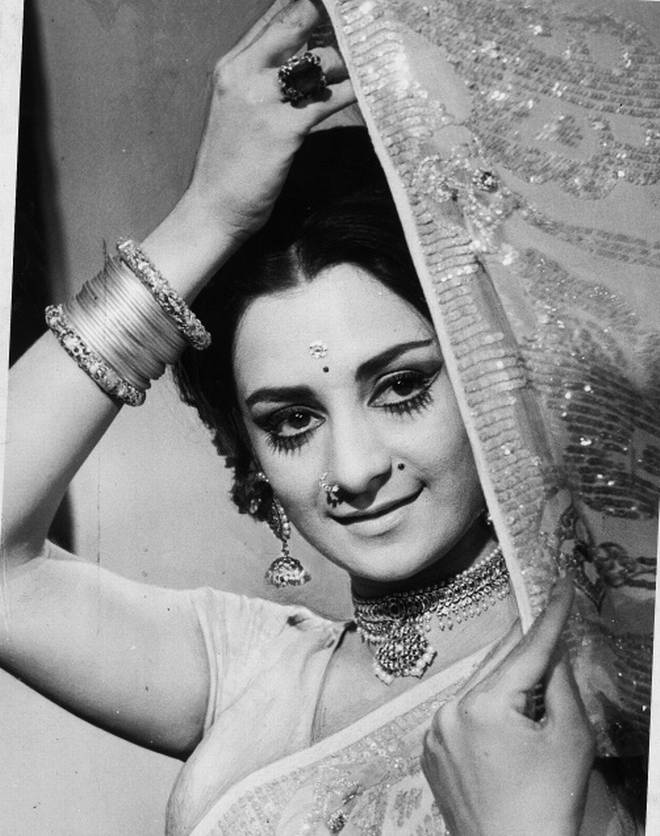 He entered the film industry with the movie Jwar Bhata (in picture) in 1944. But it couldn’t hit the box-office. His first major hit was Jugnu in 1947 in which he starred alongside Noor Jehan.
He entered the film industry with the movie Jwar Bhata (in picture) in 1944. But it couldn’t hit the box-office. His first major hit was Jugnu in 1947 in which he starred alongside Noor Jehan.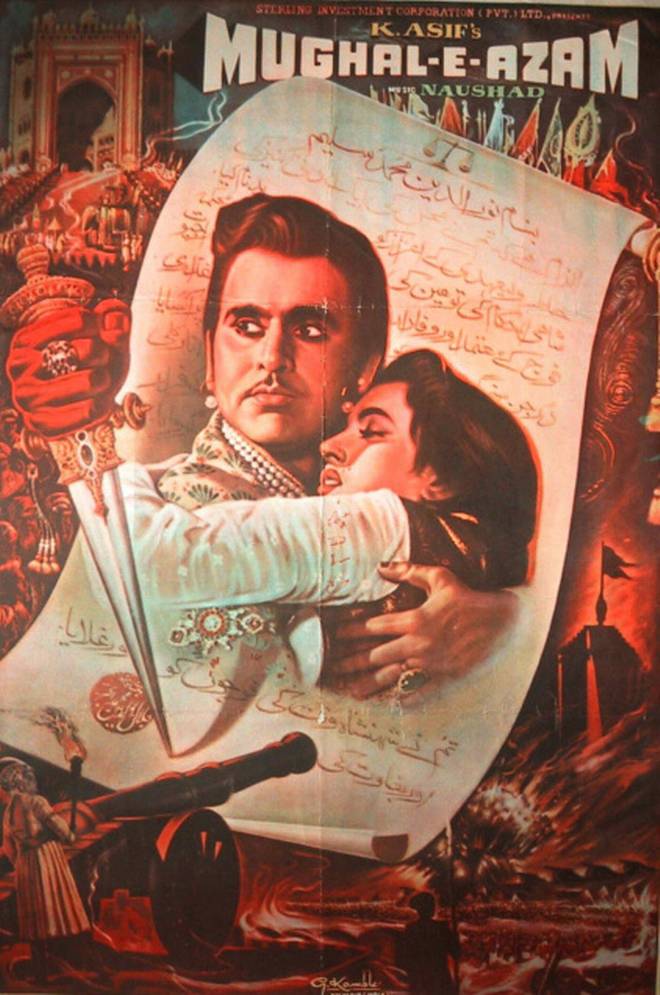 And the hit list continued with movies – Shaheed (1948), Andaz (1949), Devdas (1955), Mughal-e-Azam (1960).
And the hit list continued with movies – Shaheed (1948), Andaz (1949), Devdas (1955), Mughal-e-Azam (1960). Also known as Tragedy King, he is acclaimed as one the greatest actors ever in Indian cinema. Seen is the ‘Filmfare Magazine Collectors’ Edition Cover’ featuring Dilip Kumar, Amitabh Bachchan and Shahrukh Khan, celebrating of 100 Years of Indian Cinema.
Also known as Tragedy King, he is acclaimed as one the greatest actors ever in Indian cinema. Seen is the ‘Filmfare Magazine Collectors’ Edition Cover’ featuring Dilip Kumar, Amitabh Bachchan and Shahrukh Khan, celebrating of 100 Years of Indian Cinema.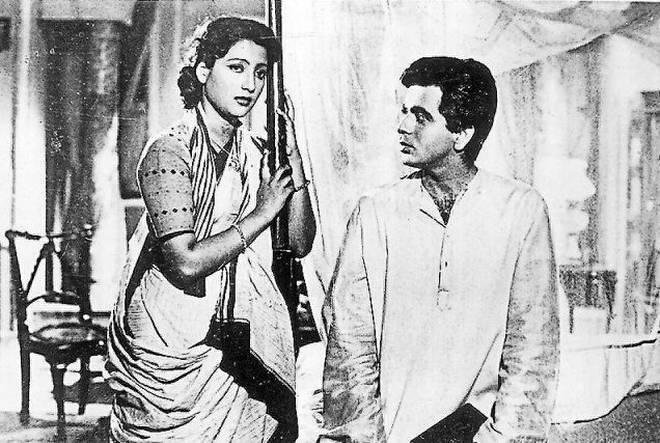 For his tragic roles in the movies like Jogan (1950), Deedar (1951), Devdas (1955), Yahudi (1958) and Madhumati (1958) earned him the name ‘Tragedy King’
For his tragic roles in the movies like Jogan (1950), Deedar (1951), Devdas (1955), Yahudi (1958) and Madhumati (1958) earned him the name ‘Tragedy King’